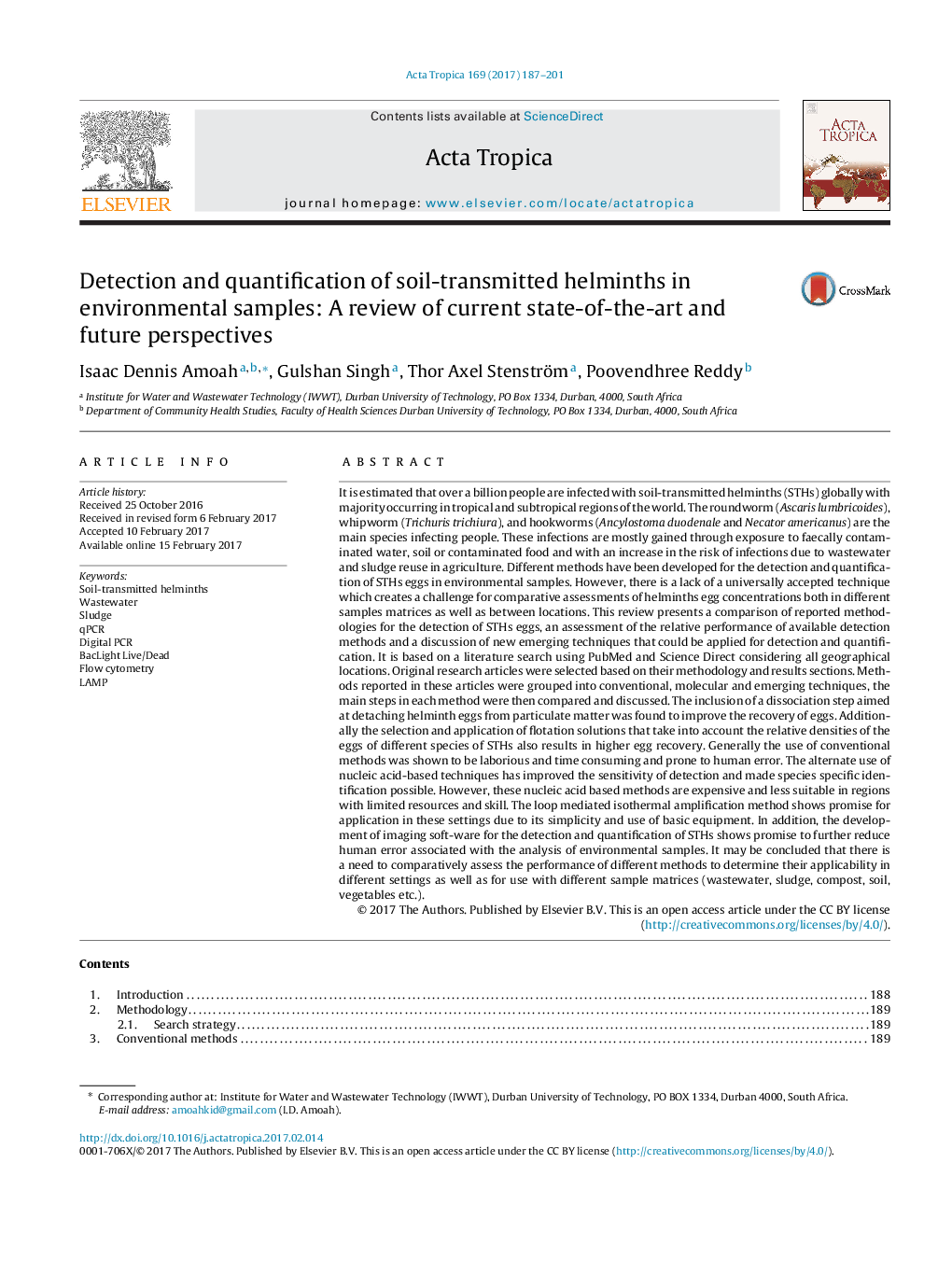| کد مقاله | کد نشریه | سال انتشار | مقاله انگلیسی | نسخه تمام متن |
|---|---|---|---|---|
| 5670852 | 1592755 | 2017 | 15 صفحه PDF | دانلود رایگان |
It is estimated that over a billion people are infected with soil-transmitted helminths (STHs) globally with majority occurring in tropical and subtropical regions of the world. The roundworm (Ascaris lumbricoides), whipworm (Trichuris trichiura), and hookworms (Ancylostoma duodenale and Necator americanus) are the main species infecting people. These infections are mostly gained through exposure to faecally contaminated water, soil or contaminated food and with an increase in the risk of infections due to wastewater and sludge reuse in agriculture. Different methods have been developed for the detection and quantification of STHs eggs in environmental samples. However, there is a lack of a universally accepted technique which creates a challenge for comparative assessments of helminths egg concentrations both in different samples matrices as well as between locations. This review presents a comparison of reported methodologies for the detection of STHs eggs, an assessment of the relative performance of available detection methods and a discussion of new emerging techniques that could be applied for detection and quantification. It is based on a literature search using PubMed and Science Direct considering all geographical locations. Original research articles were selected based on their methodology and results sections. Methods reported in these articles were grouped into conventional, molecular and emerging techniques, the main steps in each method were then compared and discussed. The inclusion of a dissociation step aimed at detaching helminth eggs from particulate matter was found to improve the recovery of eggs. Additionally the selection and application of flotation solutions that take into account the relative densities of the eggs of different species of STHs also results in higher egg recovery. Generally the use of conventional methods was shown to be laborious and time consuming and prone to human error. The alternate use of nucleic acid-based techniques has improved the sensitivity of detection and made species specific identification possible. However, these nucleic acid based methods are expensive and less suitable in regions with limited resources and skill. The loop mediated isothermal amplification method shows promise for application in these settings due to its simplicity and use of basic equipment. In addition, the development of imaging soft-ware for the detection and quantification of STHs shows promise to further reduce human error associated with the analysis of environmental samples. It may be concluded that there is a need to comparatively assess the performance of different methods to determine their applicability in different settings as well as for use with different sample matrices (wastewater, sludge, compost, soil, vegetables etc.).
Journal: Acta Tropica - Volume 169, May 2017, Pages 187-201
